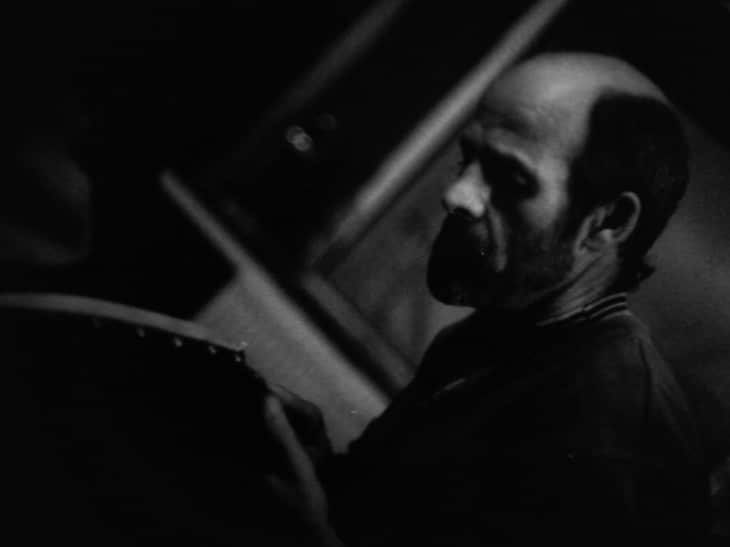By Ruadhán MacEoin.
Irish-Army soldier, fisherman, truck driver, horseman, horticulturalist but above all campaigner, Dominic Dunne was many men during his tragically curtailed but eventful life. He has died after a very short illness. It was typical of Domo’s mischief: his friends thought he was 55 but in fact he was born in 1954. He appeared youthful, such was his zest for life – not just for his own, but for that of the planet and its environment. Socially, ecologically, culturally, Domo’s enthusiasm for engagement with the world around him was on the one hand a mission of fun but on the other a stealthy manifesto that the world around him could be a better place. He wanted the world to be more equal, more just and more sustainable but this most good-natured of men also wanted it to be joyful.
A little man, with a big heart, and great brain, he was an activist up and down. ‘Raise Awareness’ was one of Domo’s favourite battle cries; and he was central to a number of civic initiatives, initially as an active volunteer working magic on the ground – and in more recent years at more strategic levels.
He had attended the Carnsore anti-nuclear protests in the 1970s, as a demonstrator.
Famously he initially went in to Carrickmines Castle (a major archaeological complex under threat from the M50 motorway), on a two-day hike in 2002; but his stop-off merged with an international cause célèbre in two Supreme Court cases where he was plaintiff – one of which he won.
Domo was an ideal plaintiff as he was fearless, and penniless.
In those days – before the Aarhus Convention – citizens risked losing their home if they took cases in the public interest to protect the environment. Even public-interest court cases could only be taken by the unfeasibly wealthy or, alternatively and paradoxically, by a citizen who didn’t own a home. Though Carrickmines was lost it inspired many other theatres of campaign around the country. Public opinion as to the value of protecting heritage shot up from 46% to 74% during those years.
Environment, heritage and sustainability entered the public consciousness as the Celtic Tiger was sharpening its claws – and all the while, Dominic would gently strum his guitar, have a giggle – and engage those around him on the issues. Domo was winning the war.
Again with the now celebrated 1916 Moore Street National Monument, his was to be a crucial role – in chairing the first meeting in 2005 of the successful campaign that ultimately saved the last headquarters of the 1916 Provisional Republican Government – and the three adjacent historic buildings. Culture Minister Heather Humphreys wrote a letter that was read at Domo’s humanist funeral that acknowledged that without him the monument would not have been saved.
Yet Domo always said it was the Glen of the Downs that was the key turning point for environmental awareness in Ireland. A campaign began in 1997 to protect the nature reserve in Wicklow where the road was being widened; a world of tree houses, camp fires and protest was rose, with – despite stresses – a great deal of good fun! The Irish media were fascinated. The Irish Times ran articles such as ‘Party time in the Glen of the Downs as eco-warriors get out of their trees’ but it only whetted the appetite of the ego-free but contrarian protestors; and in the end they even managed to get the width of the extension of the dual- carriageway cut back.
Principles were Dominic’s thing but seeming intransigence could happily switch to positive pragmatism – as long as principles were not compromised, and ideally a few more adopted for good measure.
Originally born in Ballyfermot, he put down roots in Clondalkin but lived the last few years near Cloughjordan, Co Tipperary, in the eco-village.
Those who met him would proclaim his friendship with pride; and each of his friends thought they were his best friend. Among them was archaeologist Dr Mark Clinton, who initially met Dominic at Carrickmines where he was actually site director of the archaeological excavations – and with whom, Dominic, this writer, and others close to him, including Shirley O’Brien and the late Stephen Devaney, subsequently formed the National Monuments and Antiquities Committee of An Taisce.
To say we miss him, would be, as Domo would often cheerfully declare – “to state the bleedin’ obvious”’. Our heartfelt sympathies go foremost to his family, including his former partners Sheila and Jackie – and five children; Katie, Ian, Orla, May, and Kiki – who miss him most of all, and to whom he was devoted beyond all else. For May and Kiki, only seven and six years old, a great light has gone out of their childhood.
His work, his spirit, his sense of fun and his values continuing to inspire. Others might die for their country – but Domo lived for his. And the awareness is rising: as Domo would say, Beir bua! •
